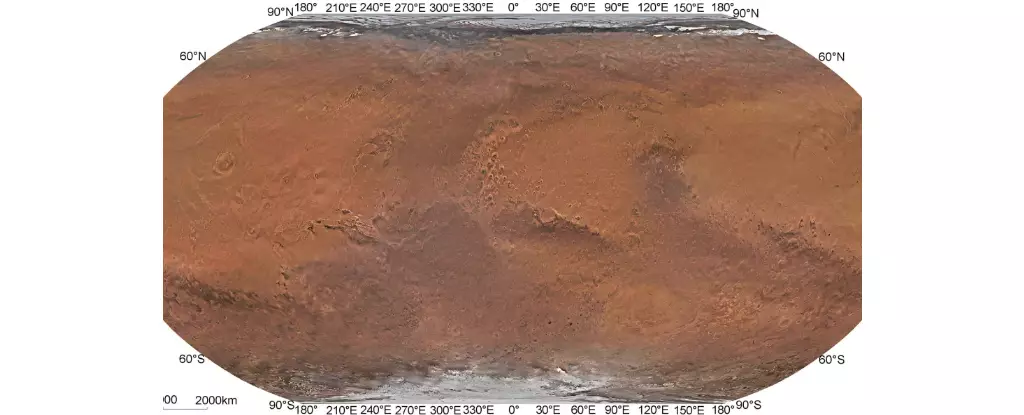China’s Tianwen-1 mission, which arrived in orbit around Mars in July 2020, is a groundbreaking venture by the China National Space Administration (CNSA). The mission comprises an orbiter, a lander, two deployable cameras, a remote camera, and the Zhurong rover. Its primary objectives include studying Mars’s geology, internal structure, atmosphere, and the search for signs of water on the planet. Moreover, Tianwen-1 is part of a series of interplanetary missions that aim to explore Mars thoroughly.
Through the Tianwen-1 mission, researchers from the Chinese Academy of Sciences (CAS) have managed to create the first high-resolution global color-image map of Mars. Led by Professors Li Chunlai and Zhang Rongqiao, the team utilized images captured by the mission’s orbiter to produce a map with a spatial resolution exceeding 1 km. This map stands as the most detailed representation of Mars to date and may serve as a crucial resource for future crewed missions to the planet.
Advancements in Mapping Technology
While previous missions have contributed to mapping Mars, the Tianwen-1 mission has surpassed them in terms of resolution and color accuracy. The map created by the CAS team outperforms past efforts, with images acquired by instruments such as the Mariner 9 probe, the Viking orbiters, and the Mars Global Surveyor displaying spatial resolutions far below what Tianwen-1 has achieved. Through meticulous data processing and advanced technology, the team successfully generated a seamless global mosaic that showcases the true colors of the Martian surface.
The Tianwen-1 Mars Global Color Orthomosaic 76 m v1 is a significant milestone in Martian exploration. With a spatial resolution of 76 m and a horizontal accuracy of 68 m, this map provides unparalleled detail and authenticity. It could serve as a valuable reference for other space agencies and organizations interested in mapping Mars with greater precision. Additionally, the map may aid in the selection of landing sites for future robotic missions and could play a crucial role in planning crewed missions to Mars, which are expected to take place within the next two decades.
The Tianwen-1 mission has not only expanded our understanding of Mars but also revolutionized the way we map and explore the red planet. Through cutting-edge technology and collaboration, the mission has set a new standard in high-resolution planetary mapping. The Tianwen-1 Mars Global Color Orthomosaic 76 m v1 represents a significant achievement in space exploration and paves the way for future endeavors to unlock the mysteries of Mars.



Leave a Reply